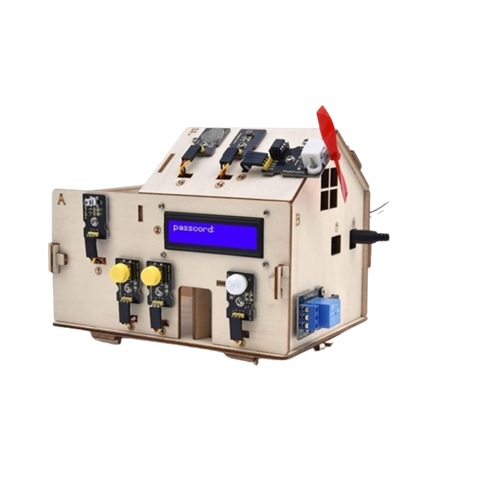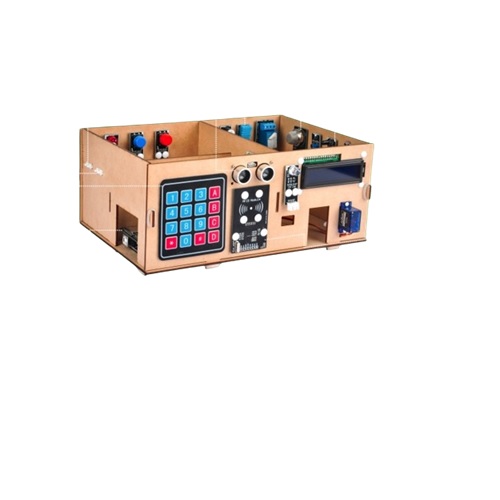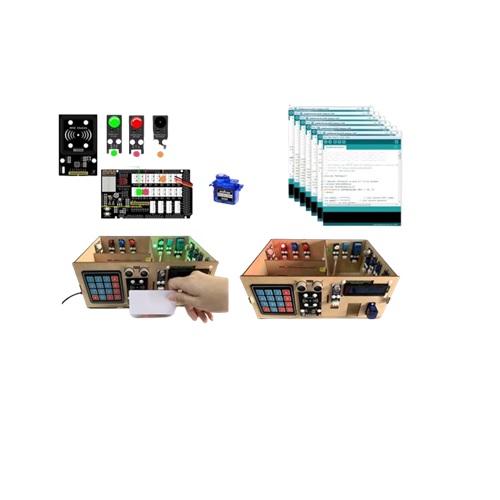IoT & AI Kit
₹17,796.00 (Price is Exclusive of GST)
- Main Controller Board: 1
- LED Matrix Module: 2
- Servo Motor: 6
- DC Motor: 4
- Push Button Switch Module: 2
- Temperature Sensor: 1
- Microcontroller Board: 1
- Vibration Sensor: 1
- Potentiometer Module: 2
- Ultrasonic Sensor: 1
- Water Level Sensor: 1
- Sound Sensor: 1
- Limit Switch Module: 2
- Soil Moisture Sensor: 1
- Buzzer Module: 1
- Colour Sensor: 1
- TFT Display (On Board): 1
- Push to Lock Switch Module: 2
- Radar (Motion) Sensor: 1
- Stepper Motor: 2
- Light Sensor: 1
- Magnetic Sensor: 1
- Moisture Sensor: 1
- Seven Segment Display: 1
- IR Sensor: 2
- Fan Module: 1
- LED Module: 2
- Servo Motor: 6
Description
IoT & AI Kit
The IoT & AI Kit features a comprehensive array of components designed for diverse applications. It includes a Main Controller Board and various Microcontroller Boards to manage and interface with numerous sensors and actuators
. The kit features sensors such as IR, Ultrasonic, Sound, Light, Magnetic, Colour, Temperature, Moisture, Vibration, Water Level, Soil Moisture, and Radar (Motion) sensors to monitor and collect environmental data. Input and control modules include potentiometer modules, push-button switches, push-to-lock switches, limit switches.
For visual output, it includes an LED Module, LED Matrix Module, Seven Segment Display, and TFT Display (On Board). Actuators such as the Buzzer Module, Fan Module, Servo Motor, DC Motor, and Stepper Motor provide various forms of mechanical control.
This kit is ideal for building interactive and automated systems, integrating sensing, processing, and actuation capabilities.
Using the IoT & AI Kit, students can learn a variety of skills, including:
- Microcontroller Programming: Gain experience with programming microcontrollers to control sensors and actuators, using languages like C/C++ or Python.
- Sensor Integration: Understand how to interface with and utilize different types of sensors such as IR, ultrasonic, and temperature sensors to collect and interpret environmental data.
- Data Acquisition and Processing: Learn to gather data from sensors and process it to make decisions or trigger actions.
- Circuit Design and Assembly: Develop skills in creating and assembling electronic circuits using various modules and components like LEDs, displays, and motors.
- Actuator Control: Control various actuators such as motors and servos to perform mechanical tasks based on sensor inputs.
- User Interface Design: Work with visual output components like LED matrices and TFT displays to design and implement user interfaces.
- Automation and Robotics: Build and program automated systems and robots to perform tasks autonomously or based on sensor inputs.
- Problem-Solving and Debugging: Enhance problem-solving abilities and learn debugging techniques through hands-on experimentation and troubleshooting.
- IoT Concepts: Understand the fundamentals of the Internet of Things, including how devices communicate, collect data, and interact within a networked environment.
- Project Management: Develop skills in planning and executing projects, including designing systems, testing, and iterating on solutions.












Reviews
There are no reviews yet.